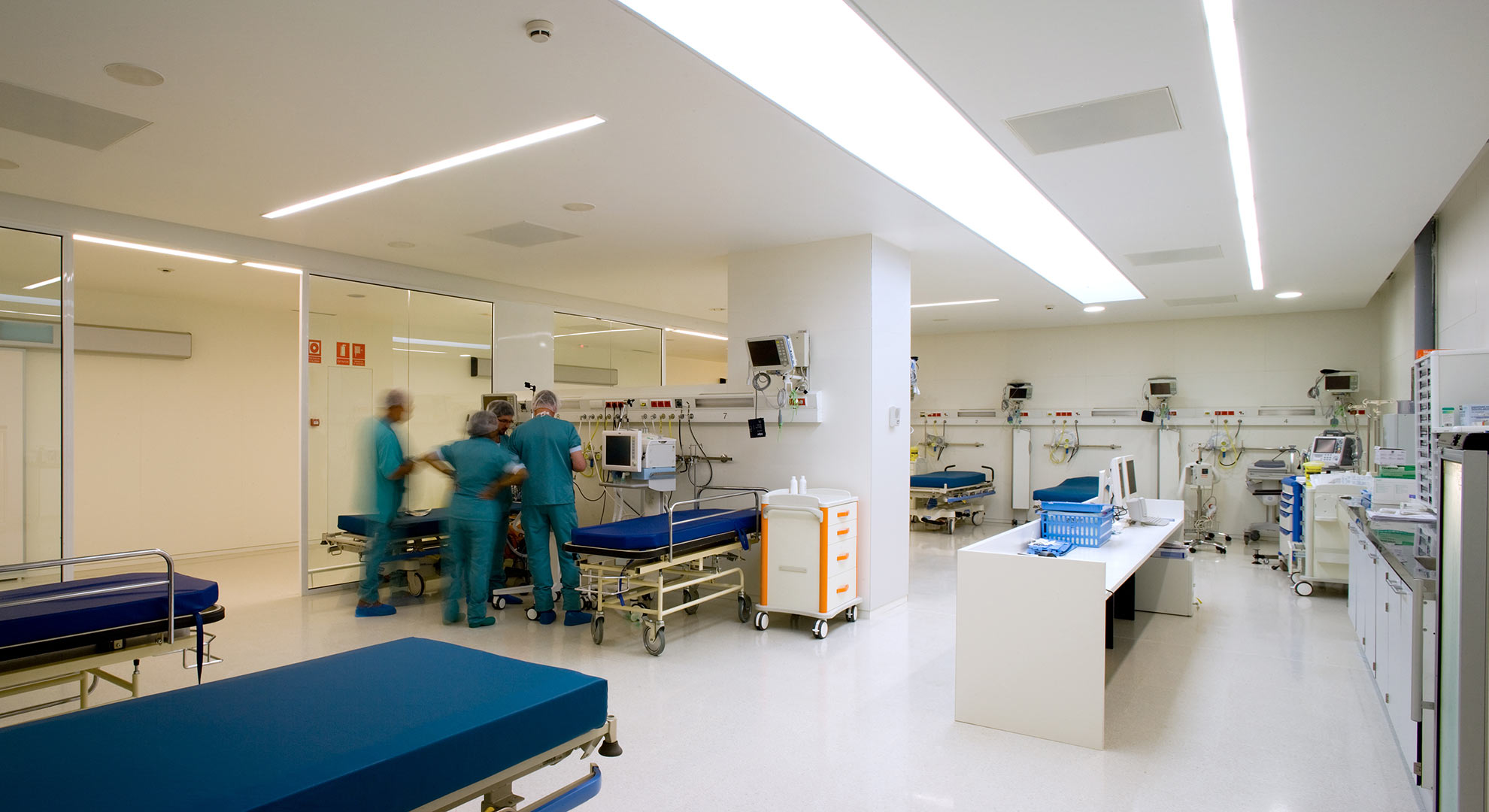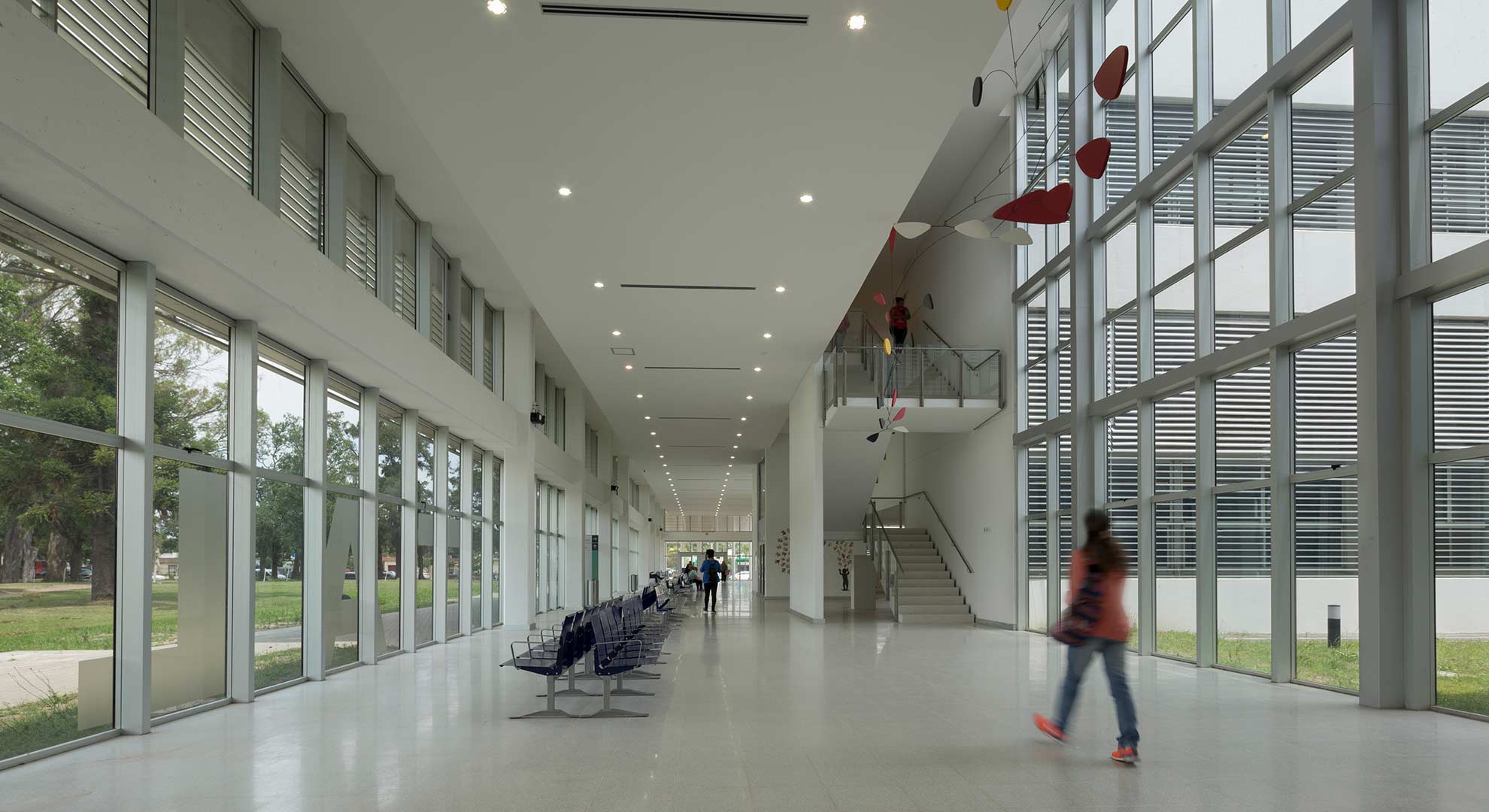Reflections on the Healthcare Network
How to coordinate and integrate healthcare systems
How to coordinate and integrate healthcare systems
The situation caused by this pandemic that we are experiencing has highlighted the need to rethink many of the fundamental issues of our society. As professionals specialized in the field of healthcare architecture, we are faced with the great challenges that healthcare systems around the world still have today.
We believe that we need to reinforce the concept of coordinated and integrated networks and resources. A healthcare network must be based on the integration of various facilities—differentiated by the complexity of medical services offered—from primary care centers, to medium complexity and county hospitals, to regional hospitals, which can be complemented by specialized facilities such as emergency or research centers.
The dimension of the hospital networks and the complexity of medical services will depend on the size of the population and the scale of the region where they are located, including rural areas.
Evolve and expand the network, not the healthcare buildings
Increasing the number of facilities and the complexity of the system helps to avoid the expensive and inconvenient increase of existing installations. This growth means adding either general or specialized facilities, according to population demand. All services are connected digitally and allow patients to be directed to the appropriate level of care.
The hospitals architecture that form part of the network would not only be new buildings, they could also integrate existing facilities, including those that have become partially obsolete, which can then be modernized in terms of both diagnostics and treatment. Recycling and renovating an existing structure, and adapting it to the requirements of the network may, depending on its condition, be more economical.
The network addresses another current principle of healthcare. Hospitals building design are no longer measured by the number of beds, due to the fact that the average patient’s stay has been shortened, but instead by the complexity and diversity or specialty of the services provided, or the types of disease that are treated there.

General Hospital of Mollet, Spain, an evolutionary hospital that forms part of the Catalan healthcare network, Mario Corea Arquitectura. Photo © Pepo Segura
Today, the fact that a hospital contains 140 beds indicates the role it plays in the healthcare network. The system has to be made up of modular buildings and it has to be capable of changing, evolving and if necessary, growing. This will allow it to respond in both the short and long term and to specific situations such as a pandemic or natural disaster, without collapsing the existing network and with the same safety guarantees for both patients and healthcare professionals.
Networks must respond to the conditions and characteristics of their location: the density and distribution of the population, geography, climate, topography, and socioeconomic and cultural development, along with the level of training of medical and nursing personnel, urban characteristics, and infrastructure services. These variables must be considered when determining the required complexity of the network, as well its future capacity for evolution.
It is time to reflect on and analyze the different existing healthcare systems, like those in Catalonia, Spain and in Santa Fe, Argentina, evaluating how the network can be completed and adapted to the diversity of specific situations that we will face in the immediate future.
Santa Fe, Argentina: a case study
In 2007, with the aim of creating a network of healthcare infrastructures, as well as schools and cultural centers to ensure the welfare of the citizens, the Government of Santa Fe began a program of social architecture in the province, conceptualized by the governor, Dr. Hermes Binner.
Together with the Special Projects Unit of the Ministry of Public Works, a strategic plan was created for healthcare services, which organized the region into networks, connecting central areas with peripheral ones while correcting territorial inequalities and enhancing the resources of each region. In each of the five regions, the concept of a healthcare system was proposed by building three types of healthcare facilities: primary care centers, medium complexity hospitals and five high complexity hospitals.

Hospital Dr. Gutiérrez, Venado Tuerto, Argentina, an example of a high complexity hospital in the Santa Fe healthcare network, Special Projects Unit, MOP. Photo © Gustavo Frittegotto
In total, more than 100 facilities were built, meaning that today, Santa Fe has one of the strongest and most autonomous public healthcare systems in Latin America.
What is interesting about Santa Fe’s plan, is not just its local Latin American context, but the fact that it offers an opportunity to open an international debate on a variety of issues that have been emerging around the world in relation to architecture, urban design and social services.
In such a historic moment, it is impossible to accept that there are many places in the world where healthcare services are poor or, in some cases, nonexistent.
The construction of integrated and coordinated healthcare networks that provide comprehensive services, is now an inalienable right for all citizens globally. However, the healthcare network by itself cannot exist without being backed by political, social and economic commitment, for the benefit of all.
Main image: Primary Care Center CAP Manresa, Spain, in its urban context, Mario Corea Arquitectura. Photo © Pepo Segura
